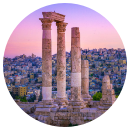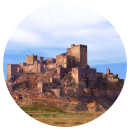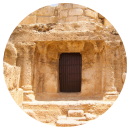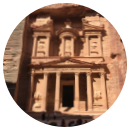Islamic Guide To Jordan
Country
Jordan
Cities
Amman - Kerak - Dead Sea - Petra
Currency
Jordan Dinar
Ancient monuments, nature reserves and seaside resorts, define Jordan. It’s home to the famed archaeological site of Petra, the Nabatean capital dating to around 300 B.C. Set in a narrow valley with tombs, temples and monuments carved into the surrounding pink sandstone cliffs. Jordan is also known as the land of the Prophets.
AMMAN

The capital of Jordan is a modern city with numerous ancient ruins. Jabal al-Qala’a hill, the historic Citadel includes the pillars of the Roman Temple of Hercules and the 8th century Umayyad Palace complex, known for its grand dome. Built into a hillside is the Roman Theatre a 2nd-century stone amphitheatre offering occasional events.
KERAK

Kerak Castle is a Crusader castle that began construction in 1140. It is one of the largest crusader castles in the Levant and in 1183 Salahudin’s forces attacked and repelled the Crusaders. Burial site of Prophet Nuh (AS) and the Prophets companions Zaid bin Harithah, Ja’far bin Abi Talib, and Abdullah bin Ruwahah (ra) are located.
AL KHAF

A popular attraction outside of Amman is Ashab Al- Kahf or The Cave as mentioned in the Holy Qur’an in Surah Al-Kahf and it is located outside the village of Al-Raqim. Persecuted by despotic rule of Trajan for monotheism, a group of pious youths took refuge in this cave. Allah put them to sleep, and when they revived 300 years later.
PETRA

Is a famous archaelogoical site in Jordan’s southwestern desert. Dating aroudn 300 B.C., it was the capital of the Nabatean Kingdom. Accessed via a narrow canyon called Al Siq, it contains tombs and temples carved into pink sandstone cliffs. It’s most famous structure is 45m-high Al Khazanah, a temple known as the The Treasury.
Enquire
1
Step 1
keyboard_arrow_leftPrevious
Nextkeyboard_arrow_right
